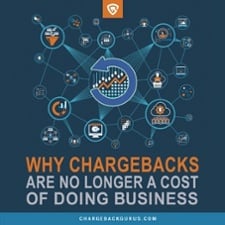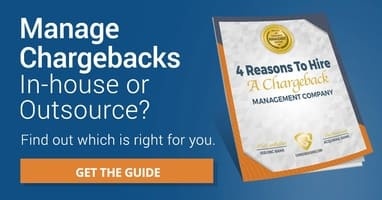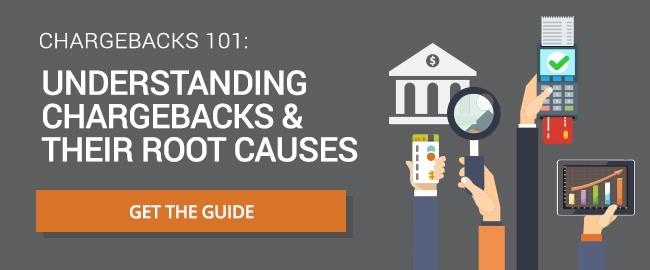Mastercard Chargeback and Dispute Merchant Guide
Table of Contents
- How Does Mastercard's Chargeback Process Work?
- What Are Mastercard’s Chargeback Time Limits?
- Does Mastercard Have an Excessive Chargeback Program?
- What Are the Newest Rules for Mastercard Chargebacks?
- How Do I Fight Mastercard Chargebacks?
- Chargeback Knowledge Is Power
- How Do I Claim a Mastercard Chargeback?
- What Qualifies for a Mastercard Chargeback?
- Do Chargebacks Cost Money?
One of the things that makes effective chargeback management frustratingly complicated is the fact that each individual card network has its own process, its own rules, and its own terminology. While there are broad similarities between the different networks, merchants can often run into trouble when they assume that what they know about dealing with chargebacks from one network will hold true for another.
Mastercard is second only to Visa among card networks in the United States, which means many merchants will be dealing with Mastercard chargebacks regularly. In order to minimize difficulties for merchants, Mastercard often follows Visa's lead when it comes to the rules for chargebacks. When Visa makes major changes to its process, Mastercard often announces similar changes soon after.
Unfortunately, there are still major differences between the two networks. Without an understanding of those differences, merchants who are familiar with Visa chargebacks sometimes become overconfident and end up making simple mistakes that hurt their chances of getting a chargeback reversed. Let's take a look at Mastercard chargebacks and what merchants need to know to manage them effectively.
 Ignoring the differences between card networks can cause you to miss response deadlines, misinterpret reason codes, and submit the wrong kind of evidence in representment.
Ignoring the differences between card networks can cause you to miss response deadlines, misinterpret reason codes, and submit the wrong kind of evidence in representment.
There’s nothing worse than getting stuck with an avoidable chargeback, so familiarizing yourself with card network rules is an important part of your overall chargeback management strategy.
The card networks update their rules regularly in order to account for the changing landscape of e-commerce and new forms of payment card fraud. The updated guidelines they publish periodically aren’t exactly light bedtime reading, with Mastercard's latest chargeback guide totaling 688 pages of dense information.
These guides are good to have as a reference in case you need a definitive answer to a specific question, but they're a terrible way to try to learn the ins and outs of how chargebacks work with a given network. Fortunately, we're here to help.
How Does Mastercard's Chargeback Process Work?
Let's go over the stages in the Mastercard chargeback process one at a time:
First Presentment
The original transaction is the first time the charge is “presented” to the bank. The purchase amount is debited from the cardholder’s account and credited to the merchant.
Request for Information (Optional)
If the cardholder doesn't recognize a charge or doesn't agree with the billed amount, the bank may pass on a request for more information to the merchant. This step is optional, and many banks skip it and proceed directly to a chargeback.
First Chargeback
If the merchant doesn't respond to a request for information, the bank chooses not to send one, or the information provided doesn't resolve the issue, the dispute will proceed to a chargeback.
This causes the transaction to be credited back to the cardholder and debited from the merchant’s account. If the merchant chooses to accept the chargeback, the dispute ends here.
Second Presentment
The merchant can fight the chargeback by representing the charge to the bank. For the bank to accept the representment and reverse the chargeback, the merchant must submit evidence that proves the chargeback is not valid.
Pre-arbitration
If the issuer doesn't find the merchant's evidence convincing enough to reverse the chargeback, or if the cardholder presents new evidence supporting their case, the case may go to pre-arbitration. The merchant can either accept that they lost the dispute or decline the pre-arbitration, in which case the issuer has the option to either reverse the chargeback or go to arbitration.
Arbitration
Once a case goes to arbitration, Mastercard will step in, review the evidence, and make a final decision on the dispute. The losing party will also be charged fees totaling $500. The merchant may concede the case at any time before Mastercard makes its decision, in which case the fees are reduced to $300.
What Are Mastercard’s Chargeback Time Limits?
Merchants must retain records related to Mastercard transactions for as long as they might be needed for representment evidence.
Mastercard allows cardholders a fairly generous amount of time to file a chargeback. Most chargebacks can be filed up to 120 days after the transaction, but certain recurring billings can be disputed a whopping 540 days later.
For merchants and banks, however, the deadlines aren't quite so generous. Here's the rundown:
- Merchants have 18 days to respond to a request for information
- Merchants have 45 days to submit second presentment
- Issuers have 45 days to file pre-arbitration
- Merchants have 30 days to accept pre-arbitration
- Issuers can escalate to arbitration no earlier than 30 days and no later than 75 days after second presentment
Note that for second presentment, the clock starts ticking when the chargeback is filed, which may be up to a few days before the merchant receives notice. Regardless, it's generally best to decide whether or not to fight a chargeback quickly upon receiving it. Once a merchant decides to pursue a second presentment, evidence should be gathered and submitted as soon as reasonably possible.
Does Mastercard Have an Excessive Chargeback Program?
To calculate your chargeback ratio, Mastercard divides the number of chargebacks you’ve received in the current month by the number of Mastercard transactions you processed in the previous month. Acquiring banks are responsible for tracking and following up on their merchants’ chargeback ratios.
 Merchants who end a month with at least 100 chargebacks and a chargeback ratio of 1.5% or more are categorized as Excessive Chargeback Merchants (ECM). A ratio of 3% or more with at least 300 chargebacks will result in being categorized as a High Excessive Chargeback Merchant (HECM).
Merchants who end a month with at least 100 chargebacks and a chargeback ratio of 1.5% or more are categorized as Excessive Chargeback Merchants (ECM). A ratio of 3% or more with at least 300 chargebacks will result in being categorized as a High Excessive Chargeback Merchant (HECM).
The first month a merchant is placed in one of these categories essentially acts as a warning. If a merchant exceeds the thresholds a second time before three months have passed, the penalties start rolling in. Mastercard charges the amount listed in Euros for EU merchants, and in USD for all other merchants.
| Months above threshold | ECM | HECM |
| 1 | 0 | 0 |
| 2 | 1,000 | 1,000 |
| 3 | 1,000 | 2,000 |
| 4-6 | 5,000 | 10,000 |
| 7-11 | 25,000 | 50,000 |
| 12-18 | 50,000 | 100,000 |
| 19 | 100,000 | 200,000 |
Mastercard may also ask the acquirer to create and submit an action plan for addressing the merchant's chargeback problem. If a merchant stays in the program for more than 12 months, the acquirer will be charged fees as well. Most acquirers will terminate the merchant's account before they reach this point. In order to be removed from the program, a merchant must stay below the threshold for three consecutive months.
What Are the Newest Rules for Mastercard Chargebacks?
Mastercard made significant changes to its chargeback reason codes in 2021, consolidating them into just a few numeric codes and allowing a single code to have one of a number of different text descriptions differentiating it from the other possibilities.
How Do I Fight Mastercard Chargebacks?
A representative of the issuing bank will review the evidence and decide whether or not to reverse the chargeback.
If the issuer and acquirer cannot come to a final agreement about who is liable for the charge, the arbitration process may be initiated and Mastercard will adjudicate the outcome.
To prevent Mastercard (and all other) chargebacks, merchants must seek to understand the root causes behind their chargebacks. When you know why you’re getting chargebacks, you can take action to fix the problems that are causing them.
Chargeback Knowledge Is Power
When you’re fighting a difficult-to-manage chargeback problem, you need every advantage you can possibly get. Understanding the card network rules inside and out can help you make better strategic choices in how you fight and prevent chargebacks, but many merchants simply don’t have the time or resources to become chargeback experts on top of everything else they have to do to keep their business running.
Outsourcing chargeback management can be a viable solution for these merchants. The right chargeback management firm with the right experts working on your behalf can generate a positive ROI for you by bringing your chargeback rate down and winning back your recoverable revenue.
FAQ
How Do I Claim a Mastercard Chargeback?
What Qualifies for a Mastercard Chargeback?
Do Chargebacks Cost Money?
Thanks for following the Chargeback Gurus blog. Feel free to submit topic suggestions, questions or requests for advice to: win@chargebackgurus.com



